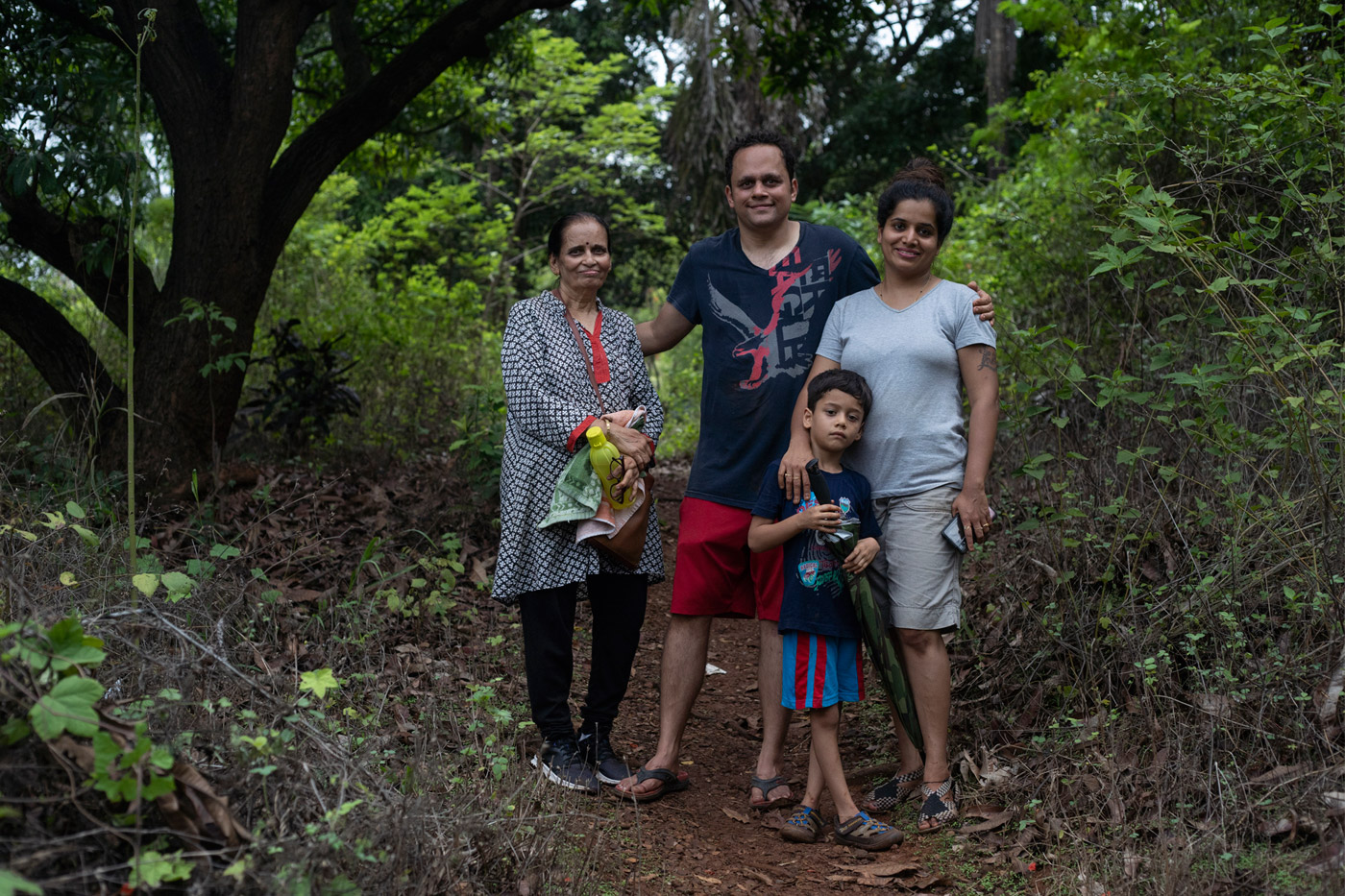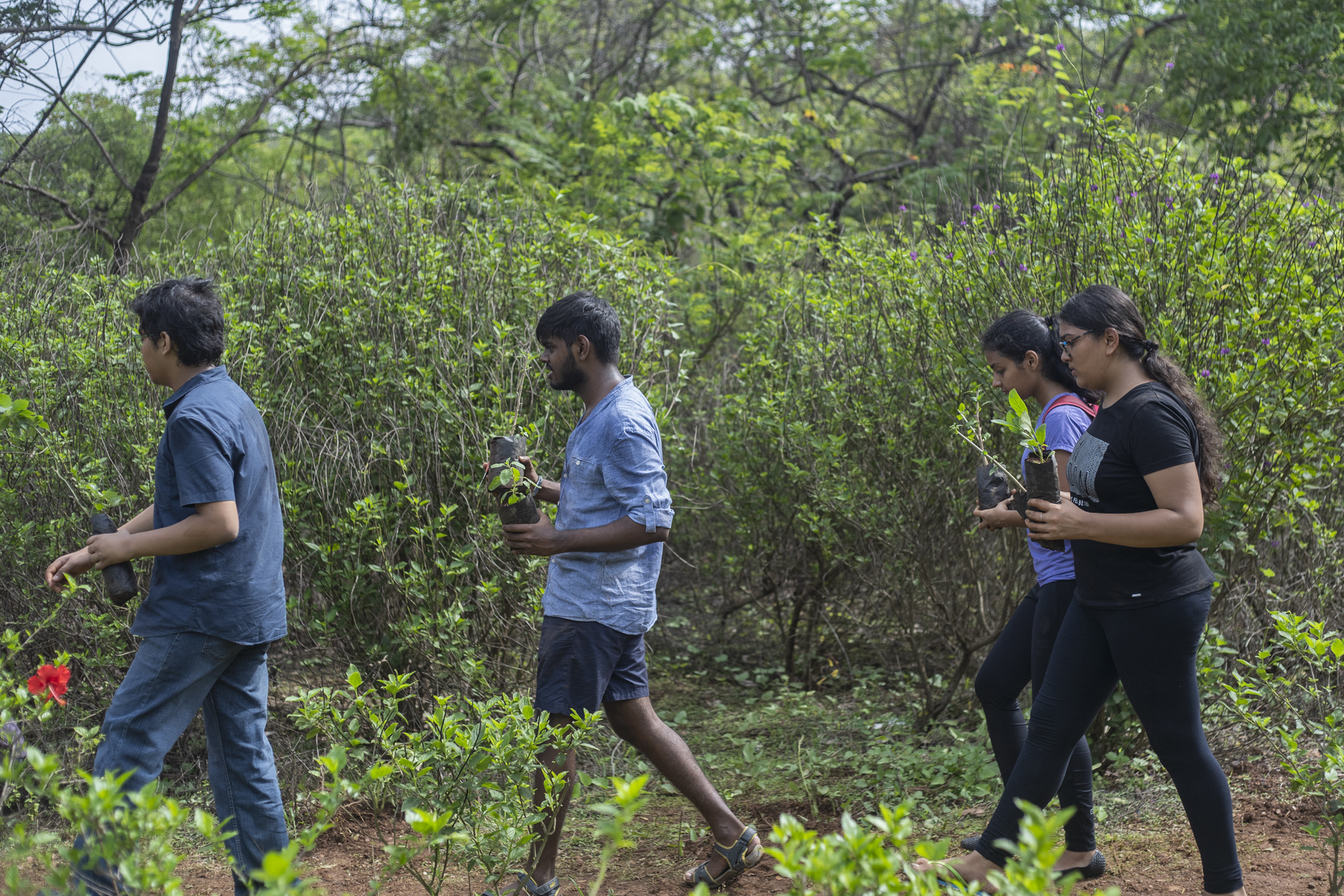6,000 trees and counting - how a deeply rooted family tradition is greening communities in Mumbai
- Nature Conservation
- Ecosystem Restoration
- Forests
- Biodiversity
- Community Action
- Climate Heroes
- Plants
- Indian Subcontinent
- Indomalaya Realm
The high noon sun makes it tough to inspect the shrubs and plants in the butterfly park without squinting. Despite the harsh conditions, the Athalye family — Sandeep, his wife, son, and mother — arrive at the two-acre park for their regular visit, not just to have a leisurely time, but to survey the thriving Eden they helped establish inside Mumbai’s green lung: the roughly 3000-acre Aarey Milk Colony.
The Athalye family’s weekend trip to Aarey, adjacent to a congested highway in the heart of the city, is sacrosanct: they are continuing a deeply rooted tree-planting family tradition.
It all started in the year 2000 when Sandeep’s father, Vinay Athalye, who used to regularly take leisurely walks at Aarey, decided to plant around 100 saplings. Driven by passion and support from his fellow walkers and family, over the next 15 years, the elder Athalye managed to plant around 5500 saplings in Aarey.
But he didn't plant just any kind of tree saplings. Athalye purposefully planted five native tree species: peepal (sacred fig/Ficus religiosa), vad (banyan/Ficus benghalensis), amla (Indian gooseberry/Phyllanthus emblica), bael (Aegle marmelos) and ashoka (Saraca asoca) that are collectively called panchavati (grove of five trees). These tree species are believed to increase oxygen in the atmosphere. Through the years, he added 550 saplings to a patch of land that was later publicly known as Panchavati and grew into a densely wooded area. Though the land was later allotted to one of Mumbai’s defense forces and became restricted to the public, Athalye was known for this deed.

The Athalye family has planted over 6000 indigenous tree saplings in Aarey, Mumbai since 2000.
Kartik Chandramouli.
After his father’s demise in 2015, Sandeep’s family continued the tradition of greening the city and planted approximately 700 saplings of native species to date. To fulfill the senior Athalye’s wish, the family planted another 1200 shrubs, and converted a barren plot into a bustling butterfly garden. “We must give back to nature,” said 39-year-old Sandeep.
Green and open spaces are a rarity in this densely populated megacity of over 12.4 million.
Rashneh Pardiwala, ecologist and founder of the Centre for Environmental Research & Education (CERE), explained, “One of the areas of concern in India is the diminishing availability of green spaces in our major metros. Today, Mumbai, for example, has just 1.1 square metres of open space per person, including Sanjay Gandhi National Park, gardens, recreation grounds, and playgrounds.”
Mumbai falls short of World Health Organization’s (WHO) recommendation of nine square metre green open spaces by almost nine times. The 2017 tree census conducted by the governing civic body of Mumbai, Brihanmumbai Municipal Corporation (BMC) revealed that the city had one tree for every four people. Further, a recent study by Indian Institute of Technology (IIT)-Bombay highlighted how people from lower socio-economic backgrounds have less access to green space.
That’s not good news for the coastal city, which is vulnerable to the impacts of climate change.
Trees are beneficial to the environment. They act as a carbon sink by absorbing carbon dioxide (CO2) from the atmosphere and releasing oxygen (O2). An increase in atmospheric CO2 due to human activity is one of the leading causes of climate change. A recent study claims a natural solution to mitigate this: plant a trillion trees in specific regions of the world to capture 25% of carbon dioxide.
CERE has planted 46,557 large native trees across 61 locations including many sites in Mumbai under its Urban Afforestation Project (UAP). The initiative helps companies, organizations, and individuals reduce their carbon footprint and has sequestered 12,602 metric tonnes of CO2.
The benefits of planting tree canopy and green cover branch in several directions. It regulates the local climate and reduces the urban heat island effect caused by heat trapped between the artificial structures of the city. Urban trees also play a crucial role in reducing air pollution as the leaves absorb harmful pollutants from vehicles, industries, and other sources.
Green spaces in urban areas provide shelter to local biodiversity, act as sound and wind barriers, contribute to the social, mental, and physical well-being of people, and the list goes on.

Young participants carry saplings in the butterfly garden set up by the Athalye family in Aarey, Mumbai. The family, along with the help of volunteers, planted 1200 shrubs which would host ad provide nectar to butterflies.
Kartik Chandramouli.
Fortunately, the barren plot where the second-generation Athalyes have planted on are currently free for all to access and enjoy. A kaleidoscope of butterflies might welcome visitors who enter the butterfly garden. Aarey has recorded 86 butterflies species, and Sandeep is hopeful to shelter them here.
But his idea doesn’t end with planting a sapling. He invites volunteers to the plantation drives, shows them the benefits of planting indigenous trees and hopes to give them experience and get inspired. “They should not just become opportunities for selfies,” he said. “Once you plant a sapling, you have to monitor it like a baby for the first few years.”
A recent drive in a roughly three-acre plot of land that opened up to a view of Mumbai’s skyscrapers at the horizon pleasantly surprised Sandeep. He expected around 100 to 150 people to attend and plant 300 peepal saplings, but 400 - 500 people turned up.
Sandeep is relieved that his six-year-old son gets the chance to get his hands dirty in the soil. He believes it’ll help him form a bond with nature and become sensitive towards its issues.
India pledged to reduce its national emissions by creating an additional carbon sink for 2.5 to 3 billion tonnes of CO2 through additional forest and tree cover by 2030. Mumbai, like many other cities in India, bears witness to rapid urban infrastructure projects, mostly at a disproportionate environmental cost. At such a time, the efforts of individuals and communities to safeguard or revive existing ecosystems and create new ones can be crucial.



